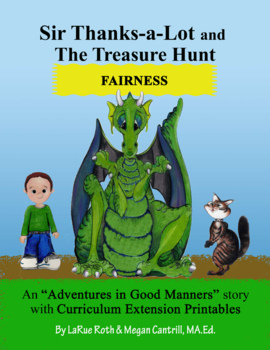FAIRNESS: Sir Thanks-a-Lot and The Treasure Hunt
- PDF
Also included in
- This complete library includes all eight, original, Sir Thanks-A-Lot character education stories and more than 35 curriculum extension activities correlated with state and national standards.Price $39.50Original Price $52.00Save $12.50
Description
Character Education Story:
Oftentimes, fairness can be forgotten in competitive situations. Because the big, green dragon wants to win the treasure hunt, he is very unhappy that Eli has invited a friend who gets around in a wheelchair to be on their team. The dragon is given an opportunity to learn the true meaning of teamwork.
Curriculum Extension Printable Activities
Additional curriculum extension printable activities are correlated with Common Core and TEKS standards in language arts and math. These games and printable activities connect with the theme and story elements for each read-aloud and are appropriate for any early education setting including schools, child care centers, and home learning.
Curriculum extension printable activities include: Color/shape activity, Rhyming Puzzles, Fruit and Vegetable Sorting Activity, and Positional Word Game.






